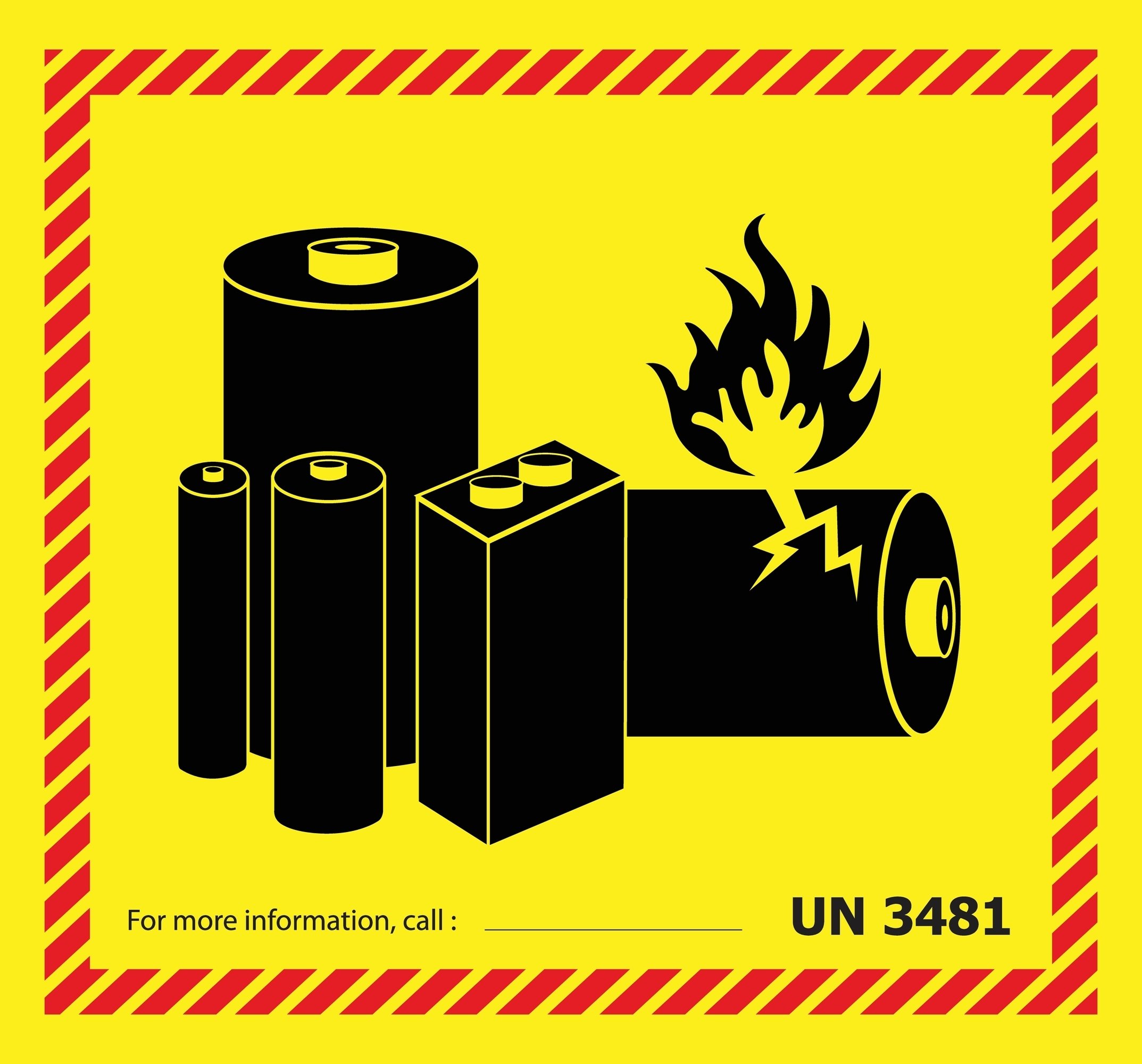Sharing information on battery safety
What can ship operators learn from their airborne counterparts as they address evident safety issues around the transport of lithium-ion batteries?

While politicians focus on energy security and trade implications, safety should be shipping’s prime concern over growing global demand for lithium — more specifically the lithium-ion batteries that power everything from smartphones to satellites. US imports from China doubled in 2022 and global demand is set to increase by over 30 percent annually from 2022 to 2030, a trajectory that mirrors the rapidly spreading and hard-to-extinguish ‘thermal runaway’ fires that can be associated with these batteries.
Lithium-ion battery fires or explosions can occur when the units are defective, damaged, overheated, overcharged or come into contact with reactive substances (such as nitric acid, as could have happened on the X-Press Pearl lost in Colombo in 2021). Such fires can burn with twice the energy of petrol fires.
Ship operators seemingly have little control over some risk factors. They can check packaging and manufacturers’ certifications, but may lack the capability to identify issues, particularly when batteries are wrongly declared (listed as ‘computer parts’ in a container that caught fire before loading in the US in late 2021). Dangerous situations have been overlooked even when properly documented (including only partial battery disconnection when transporting electric vehicles), suggesting that increased training, regulation and perhaps new fire detection technologies will be needed to make carrying batteries safe.
Supplementing global cross-industry safety regulations and carriage requirements around lithium-ion batteries, some maritime-specific initiatives are emerging. Guidance on carrying batteries in containers was published by a coalition of insurers and cargo handlers in March. The document identifies several main challenges for safe handling across the supply chain, including the proper classification of batteries, understanding battery test summary documentation, declaration of cargo (including shipper and packing declarations), container inspection regimes and implementing effective ‘know your customer’ schemes.
Technology development is another area of focus. Safetytech Accelerator, a multi-industry start-up incubator established by Lloyd’s Register, launched the Cargo Fire & Loss Innovation Initiative in February. With participation (and prospective funding) from Evergreen Line, HMM, Maersk, Offen Group, ONE (Ocean Network Express) and Seaspan, the initiative is seeking advanced technology solutions to reduce the occurrence and impact of cargo fires, with a particular interest in challenges caused by “the increasing carriage of lithium-ion batteries either in containers or within electric vehicles on car-carriers”.
Regulatory reinforcement
While voluntary guidelines and technology advances may help, regulation is the ultimate safety net. The carriage of batteries by sea is regulated under the International Maritime Organization’s (IMO) International Maritime Dangerous Goods (IMDG) Code, in which the different types of lithium-ion batteries are listed as Class 9 hazardous materials. However, P&I club Gard notes that this classification, the lowest in the IMDG Code, may underrepresent the risks that the batteries present. Further, special provisions in the code can encourage shippers to mis-categorise batteries, applying less onerous carriage requirements to batteries that carry greater risk.
The IMDG Code is reviewed regularly, but much deeper changes would be needed for shipping to match aviation’s battery safety regime. For example, International Air Transport Association (IATA) regulations forbid the carriage of waste batteries, which have been cited as a potential source in several cargo fires, as well as the charge level of batteries in air freight.
As regulation and technology take time to evolve, one intermediate solution could also be borrowed from aviation. In 2021, IATA introduced voluntary certification of operators’ lithium-ion battery safety standards, under its Center of Excellence for Independent Validators (CEIV) Lithium Batteries accreditation. Qatar Airways, Turkish Cargo and LATAM Chile are among the airlines to have undertaken the verification, which tests operators’ processes and regulatory compliance, resulting in a certification that cargo owners can use as evidence of good practice.
An equivalent voluntary certification for maritime operators would go some way to providing the training framework and capabilities that ship operators need. Supplemented by advances in technology and regulatory developments, it is one option for ensuring safe operations as the global demand for lithium-ion battery cargoes continues to grow.
Related content

Could 40% of global containership traffic be fully battery powered by 2030?

Disaster management for shipping and ports

Energy saving claims scrutinised as short-term measures loom
